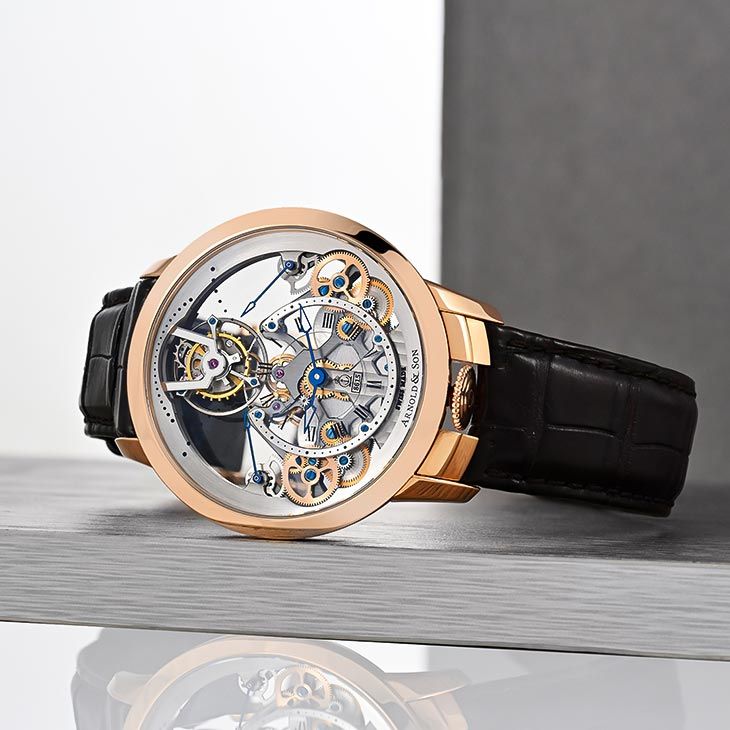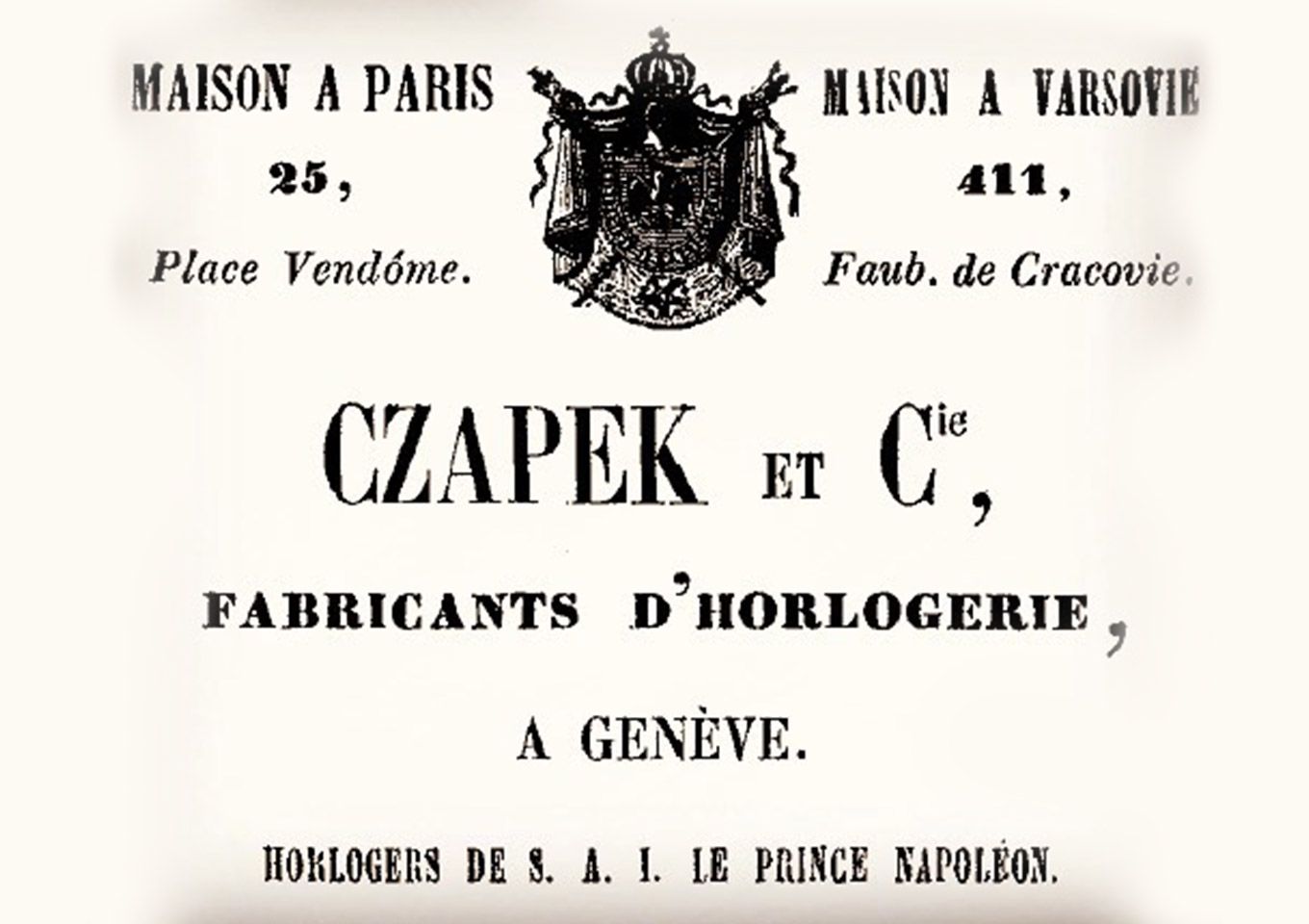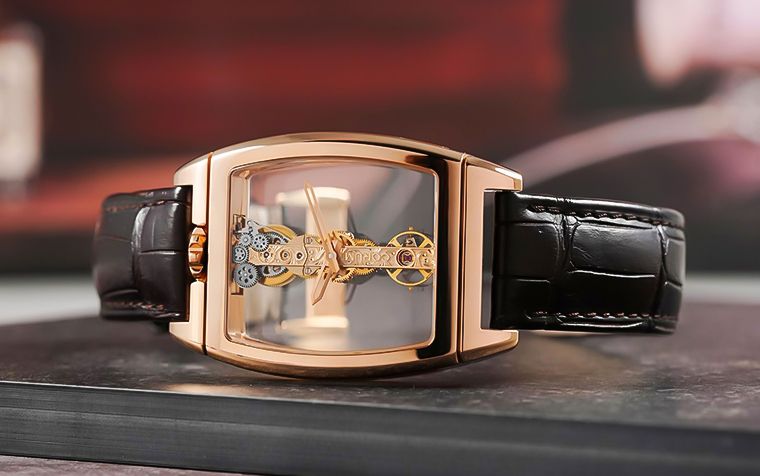
 Trending Articles
Trending Articles
-
10 Best Dive Watches To Invest In
07 Apr, 20230
-
Top Luxury Pre-Owned Watches Under 2 Lakh
25 Nov, 20220
 Featured Video
Featured Video
A Collector’s Delight — Arnold & Son Time Pyramid
READ FULL STORYIn the world of horology, time is an art form, and craftsmanship and innovation are crucial to remain at the top amid the competition. If a brand slips into obscurity, stepping back into the limelight and forging an entirely new legacy from scratch can be monumental. One brand that has successfully managed to rise from the ashes, much like a phoenix, is Czapek.
With a thrilling story of how the maison was founded and what led to its sudden disappearance in 1869 only to suddenly re-emerge in 2012, the history of Czapek is nothing short of a tale of incredible ups and downs and still managing to stand tall despite all that.
The Beginning of a Legacy: How Czapek Came to Be
A journey through time unveils the captivating tapestry of Czapek, a brand whose history is as enchanting as the timepieces it produces. Rooted in the mid-19th century, the saga of Czapek begins with Franciszek Czapek, a Polish watchmaker whose unyielding passion for horology led him to establish his own atelier in Switzerland. Having changed his name to the more locally familiar François Czapek after making a move and suffering from a failed business venture, his most rewarding idea came in 1936 in the form of a partnership with another Polish immigrant, Antoine Norbert de Patek. Patek invited Czapek to dive into the world of watchmaking, and eventually, they set up Patek, Czapek & Cie on 1 May 1839.
This partnership was successful; Patek looked after the administrative side of things, and Czapek catered to watchmaking. The collaboration led to the creation of many incredible new timepieces. However, it sadly ended just six years later. As Patek joined hands with Adrien Philippe, forming the much-renowned Patek Philippe, Czapek found his partner in Juliusz Gruzewski, with whom he set up Czapek & Cie in 1845. This partnership proved to be even more successful, lasting till 1869. It led to Czapek getting recognised as one of the greatest watchmakers of the 19th century. He even became a purveyor to the Imperial Court and the watchmaker of France’s Napoléon III, who became a loyal customer. But while this partnership was incredibly fruitful, even leading to boutiques being set up in Poland and France apart from Switzerland, 1869 was also when the celebrated artisan mysteriously disappeared.
Rising from the Ashes: The New Czapek Presents Itself
After 143 years of radio silence, the new Czapek reared its head when three Swiss entrepreneurs were spurred by connoisseurs who had allegedly found something that could be the starting point for the new era of Czapek. So, digging deep into the brand’s history and tracking down the original creations of Czapek with the help of historians, the seeds for the rebirth of Czapek were sown. Inspired by the celebrated watchmaker but still wanting to take a different approach more suited to modern times, the new Czapek was officially established in 2015, exactly 170 years after the first Czapek & Cie was formed back in 1845 and with the focus being on catering to the new watch connoisseurs.
At a time when most brands and companies are obsessed with strategy, Czapek’s newest CEO, Xavier de Roquemaurel, put emotions first, which is what compelled him to start crowdfunding to revive the incredible legacy of the atelier. This move successfully raised CHF 1.1m (or £778,000) in just three months, gaining over 100 shareholders in the process as well. Launched in Geneva amid great pomp and celebration while surrounded by excited watch lovers, the new Czapek became the first luxury horologist to get revived with the collective efforts of watch enthusiasts who genuinely appreciated the art that was Czapek’s watchmaking.
Creating a New Legacy of Innovation and Craftsmanship: Some Standout Collections of the New Czapek
While the designs, technology and everything else behind the scenes changed, one aspect remained the same for Czapek, be it back in the 1800s or now. And that is the consistent pursuit of innovation, proven by the fact that every year since then, the maison has launched a new w collection boasting an entirely new calibre.
Quai des Bergues
The Quai des Bergues was the first collection launched since the establishment of the new Czapek. It featured a distinct manual winding movement with a staggering seven-day power reserve. Reminiscent of the renaissance of Czapek & Cie, the collection was named after the location where the celebrated watchmaker had founded his company in Geneva. Hence, the watch became the perfect way to usher in the new era of the maison, combining past inspiration with modern technology.
The anticipation and excitement for all that the new Czapek had to deliver were evident with the atelier winning the prestigious Public Prize at the Grand Prix d’Horlogerie de Genève in 2017. Considered the Oscars of haute horlogerie, the GPHG award for its first watch, the Quai des Bergues No. 33bis, was only the prelude to the new Czapke’s brilliance. This collection featured the classic round case and in-house Calibre SXH1.
Quai des Bergues Lady
Although not a full collection by definition, the sole piece in this range was the Quai des Bergues No.7. It serves as the feminine counterpart to the largely successful Quai des Bergues. This timepiece also features the manual winding calibre SXH1 with seven-day power autonomy. Adding to the feminine appeal are the characteristic Fleur-de-lys hands. Distinctively-placed sub-dials at 4:30 and 7:30 for the small second counter and the power reserve complete the watch.
Place Vendôme
In 2017, the maison launched its second collection, named Place Vendôme Tourbillon Suspendu, after the place that housed the Parisian boutique opened by François Czapek in 1850. The location is not significant only because of it being the second boutique of the original Czapek & Cie but also because it was the first luxury watch boutique ever opened on that now famous square.
True to their words, the pieces in this collection featured the new in-house Calibre SXH2. Additionally, all the timepieces boasted complications in the form of three sub-dials and a skeletonised tourbillon. With a titanium grade five case in ADLC, the watches featured the signature Fleur de Lys hands and an additional GMT hand.
Faubourg de Cracovie
The third collection by the maison is named after the third boutique opened by Czapek in Poland, along with the pieces in this range boasting the third in-house Caliber SXH3. Featuring the automatic integrated chronograph crafted by the atelier, Faubourg de Cracovie brought an excellent blend of the HMS function and chronograph complications. This collection was a step into innovative automation, even earning the Faubourg de Cracovie L’Heure Bleue the “Watch of the Year” in 2018 at the Salon of Exceptional Watches (SEW).
Antarctique
This collection can be said to be the most diverse one launched by the maison to date. Experimenting with dials, displays, complications and even movements, this range launched six timepieces, each vastly distinct from the other. In terms of the in-house calibre, it did not stay limited to just one, as was the pattern in all previous ranges. With pieces boasting the SXH5 as well as the SXH7 movements, it can be said to be the most ambitious range of Czapek watches.
In Conclusion
In the horological realm, the story of Czapek unfolds as a captivating chapter of revival and triumph. From its illustrious origins in the 19th century to its modern resurgence as a beacon of refined craftsmanship, Czapek has transcended the confines of time, breathing life into its storied legacy. Blending the genius of François Czapek, the legacy of the maison, and the innovative needs of the contemporary era, the new Czapek can be stated to be on the road to claiming as much acclaim and fame as it had so deservedly earned back in the 1800s. With its resplendent revival and standout collections, the tale of Czapek is a lesson of how perseverance can triumph above everything else, even if it takes 145 years.
The Journal
Want to be the first to be in the know?
Sign up to be emailed when I publish new content. Read. Watch. Shop. Learn. Trade. All in one place.




























